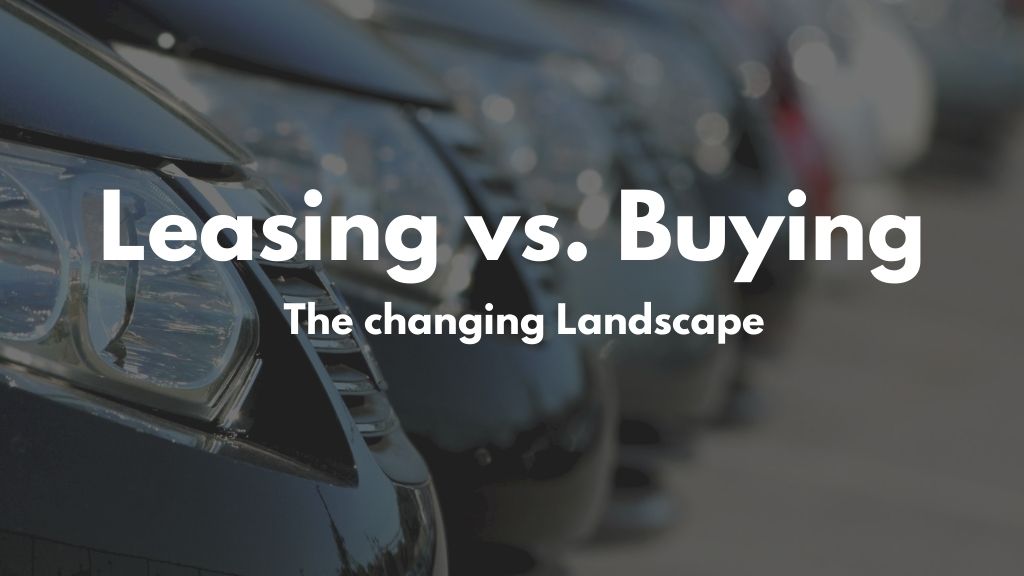Last Updated on November 30, 2020 by Jason Mason
- From The Ownership Perspective
- Inescapable Up-Front Cost Factor
- Monthly Payments involved in both Buying and Leasing
- Early Termination of Ownership or Leasing Contract
- From the Future Value Perspective of Owning and Leasing
- Mileage is a determining factor in both Ownership and Leasing of a Car
- Excessive Wear & Tear during Ownership or Leasing
- End of Term Ownership or vehicle return at the end of the leasing
- Customize your car during Ownership & Leasing
Are you contemplating buying a new car, but entangled in a tough call whether to buy a new car or lease a car and postpone the buying for now. Well, being an owner will see an increase in the monthly costs initially but in the end, you will own it.
On the other hand, leasing a car will call for smaller monthly payments but this will be incessant until you give away the leasing.
According to sources, the leasing has taken over owning a car a few years ago, and does not look like the trend is going to end anytime soon.
Many converging trends have influenced the car leasing landscape. Although a few decades back, luxury cars dominated the new-car leasing market, contemporary leasing trend has witnessed a paradigm shift with many compact cars, sedans, and small SUVs ushering in the new-car leasing segment in the marketplace.
Automobile manufacturers have spotted a new marketplace for leasing out new cars that boosted car production to grab a bigger pie in the new-car leasing demand.
The best thing, you can give away the leased car any time before or at the end of the lease.
Interest rate forms and a substantial part of the leasing cost. The benefit of low-interest rates prevailing elsewhere has entered into the lease contracts as well, benefiting the end-users in the lease market.
The leasing is growing steadily in the past 36 months as mixed blessings. Leasing is good for users repellent of getting tied up in a long contract, the flexibility of car loan allowing stretching the loan to tame the monthly repayment of loan amount making users slanting towards new car buying.
The market dynamics will take the final call between new car loan based buying and leasing, here are some major differences between purchasing & leasing to help your way ahead.
From The Ownership Perspective
You own a new car and own it for lifelong convenience. On the other hand, in leasing, you must return the car at the end of the leasing period unless you but it or renew the leasing contract.
Inescapable Up-Front Cost Factor
Owning a car, new or old, involves cash payment towards the car’s cost including tax & registration fees, and other allied charges. The initial payment involved in leasing is high that includes the down payment, initial payment, a security deposit, an acquisition fee, tax & registration, and other fees. But over the period the payment tapers off for leasing which may not for buying a new car.
Monthly Payments involved in both Buying and Leasing
Usually, payments for loans are relatively higher than lease payments. A loan amount includes the total purchase price of the car, interest, taxes, fees, and other finance charges which are sizeable. Lease payments do not include the entire cost of the car, hence much lower than the cost of the loan. Leasing payments involves the cost of the vehicle’s depreciation during the lease period, interest or rental, taxes, and fees.
Early Termination of Ownership or Leasing Contract
You are free to sell your car off or trade-in your car at any time you wish. In fact, during the financial crisis, you can pay off your loan by the money from the sale. During the leasing period, you are free to surrender the leasing contract or can be revoked under mutual agreement. However, revoking leasing early would be dearer to you as termination charges are high. The condition may seem easy if the dealer buys the car from the leasing company as a trade-in and letting you go off the contract.
From the Future Value Perspective of Owning and Leasing
An owned car depreciates adding cost reduction to the future sale price, but whatever cash value it carries, it is all yours to use it as you like. On the leasing front, in all fairness, the future value of the car does not make much difference and does not affect you financially as much as it does for the owner. That said, you do not hold any stake in the vehicle.
Mileage is a determining factor in both Ownership and Leasing of a Car
As an owner, no one will stop you from driving as many miles as you wish to travel, but be mindful, higher the mileage, the lower would be the resale or trade-in value of your car. In leasing, the terms & conditions limit the number of miles you can travel often 12000 to15000 in a year. During the inception of the contract, you can negotiate to settle for a higher mileage limit at a certain cost. You need to be aware the exceeding limits will result in charges that you eventually need to bear.
Excessive Wear & Tear during Ownership or Leasing
As an owner, you saved from worrying much about the wear and tear if you choose to. However, wear & tear will certainly impact future resale and trade-in value. In Leasing, wear & tear is a serious issue and you will be held responsible for any. You will end up paying extra charges for surpassing what is considered normal wear & tear. During the leasing period, you need to take very good care of the vehicle.
End of Term Ownership or vehicle return at the end of the leasing
As an owner, when the loan term ends, you are free from any further payment responsibly. You should be happy to have garnered equity and laid the foundation for the purchase of your next new car.
You may choose the lease period between two and three years. You may return the vehicle when the lease period gets over.
Customize your car during Ownership & Leasing
As an owner, if have every right to modify, revamp, or customize your car that complements your demeanor, however, doing so may discontinue the warranty of the vehicle. Under leasing, you are obliged to return the car at the end of the leasing contract/period. You need to ensure that you maintain the car and return it in the original condition or better sale-able condition. Any modification or customization causing any damage, you need pay the cost of fixing to restore the condition. You may take help of the insurance and pay the residual.




